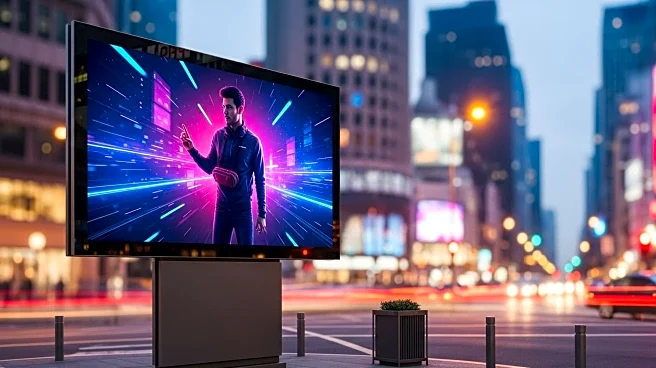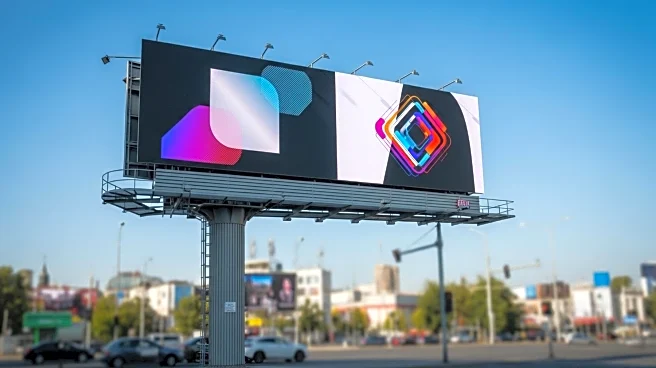What is the story about?
What's Happening?
The out-of-home (OOH) advertising sector is evolving rapidly, driven by technological advancements and data-driven strategies. A new glossary has been released to help marketers understand the complex terminology associated with modern OOH advertising. This guide covers essential terms such as 'dayparting,' 'yield optimization,' and 'zone targeting,' which are crucial for executing effective campaigns. The glossary aims to demystify the language of OOH advertising, which has expanded beyond traditional posters to include digital screens and interactive experiences. It highlights the importance of precision, context, and connection in reaching audiences, whether through weather-triggered creative or audience targeting based on mobility data. The guide serves as a pocket translator for marketers, providing insights into the fundamentals of format, measurement, and the new frontiers of automation and attribution in OOH advertising.
Why It's Important?
Understanding the terminology and strategies in OOH advertising is vital for marketers aiming to leverage this dynamic medium effectively. As OOH advertising becomes more data-driven, the ability to target audiences with precision and adapt creative content in real-time is increasingly important. This glossary provides marketers with the tools to navigate the complexities of OOH advertising, ensuring they can maximize the impact of their campaigns. By understanding concepts like 'yield optimization' and 'zone targeting,' marketers can make informed decisions about where and when to place ads, optimizing their reach and engagement. The guide also emphasizes the importance of measuring the effectiveness of OOH campaigns, linking exposure to tangible business outcomes such as store visits or app downloads. As OOH continues to evolve, staying informed about these developments is crucial for maintaining competitive advantage in the advertising industry.
What's Next?
Marketers are expected to increasingly integrate OOH advertising into their broader media strategies, utilizing the insights provided by the glossary to enhance campaign effectiveness. As technology continues to advance, the OOH sector will likely see further innovations in digital screens and interactive experiences, offering new opportunities for engagement. Marketers may focus on developing more personalized and contextually relevant ads, leveraging data management platforms to unify offline and online signals. The glossary's emphasis on precision and measurement suggests a trend towards more accountable and transparent advertising practices. As marketers become more adept at using these tools, the OOH advertising landscape will continue to shift towards greater integration with digital and social media channels, offering a more holistic approach to audience engagement.
Beyond the Headlines
The release of this glossary highlights the ethical considerations in OOH advertising, particularly regarding data privacy and consumer consent. As marketers increasingly rely on mobility data and audience targeting, ensuring compliance with privacy regulations becomes paramount. The glossary's inclusion of terms like 'zero-party data' underscores the importance of balancing personalization with privacy compliance. Additionally, the shift towards more interactive and experiential OOH advertising raises questions about the impact on public spaces and consumer behavior. As OOH advertising becomes more immersive, marketers must consider the cultural and social implications of their campaigns, ensuring they contribute positively to the environments in which they operate.
AI Generated Content
Do you find this article useful?













